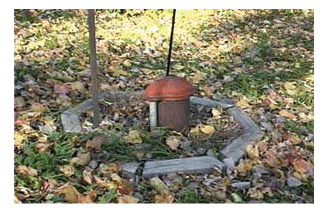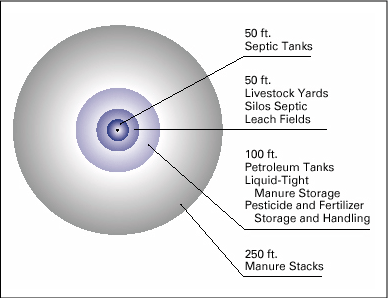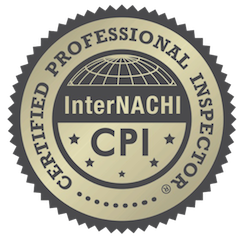More About Well Waster Testing

Private Water Wells
If your family gets drinking water from a private well, do you know if your water is safe to drink? What health risks could you and your family face? Where can you go for help or advice? The EPA regulates public water systems; it does not have the authority to regulate private drinking water wells. Approximately 15% of Americans rely on their own private drinking water supplies, and these supplies are not subject to EPA standards, although some state and local governments do set rules to protect users of these wells. Unlike public drinking water systems serving many people, they do not have experts regularly checking the water’s source and its quality before it is sent to the tap. These households must take special precautions to ensure the protection and maintenance of their drinking water supplies.
Basic Information
 There are three types of private drinking water wells: dug, driven, and drilled. Proper well construction and continued maintenance are keys to the safety of your water supply.Your state water-well contractor licensing agency, local health department, or local water system professional can provide information on well construction. The well should be located so rainwater flows away from it. Rainwater can pick up harmful bacteria and chemicals on the land’s surface. If this water pools near your well, it can seep into it, potentially causing health problems. Water-well drillers and pump-well installers are listed in your local phone directory. The contractor should be bonded and insured. Make certain your ground water contractor is registered or licensed in your state, if required. If your state does not have a licensing/registration program, contact the National Ground Water Association.
There are three types of private drinking water wells: dug, driven, and drilled. Proper well construction and continued maintenance are keys to the safety of your water supply.Your state water-well contractor licensing agency, local health department, or local water system professional can provide information on well construction. The well should be located so rainwater flows away from it. Rainwater can pick up harmful bacteria and chemicals on the land’s surface. If this water pools near your well, it can seep into it, potentially causing health problems. Water-well drillers and pump-well installers are listed in your local phone directory. The contractor should be bonded and insured. Make certain your ground water contractor is registered or licensed in your state, if required. If your state does not have a licensing/registration program, contact the National Ground Water Association.
To keep your well safe, you must be sure that possible sources of contamination are not close by. Experts suggest the following distances as a minimum for protection — farther is better (see graphic on the right):
- septic tanks: 50 feet;
- livestock yards, silos, septic leach fields: 50 feet;
- petroleum tanks, liquid-tight manure storage and fertilizer storage and handling: 100 feet; and
- manure stacks: 250 feet.

Many homeowners tend to forget the value of good maintenance until problems reach crisis-levels. That can be expensive. It’s better to maintain your well, find problems early, and correct them to protect your well’s performance. Keep up-to-date records of well installation and repairs, plus pumping and water tests. Such records can help spot changes and possible problems with your water system. If you have problems, ask a local expert to check your well construction and maintenance records. He or she can see if your system is okay or needs work.
Protect your own well area. Be careful about storage and disposal of household and lawn-care chemicals and wastes. Good farmers and gardeners minimize the use of fertilizers and pesticides. Take steps to reduce erosion and prevent surface water runoff. Regularly check underground storage tanks that hold home heating oil, diesel, or gasoline. Make sure your well is protected from the wastes of livestock, pets and wildlife.
Human Health
The first step to protect your health and the health of your family is learning about what may pollute your source of drinking water. Potential contamination may occur naturally, or as a result of human activity.
What are some naturally occurring sources of pollution?
- Micro-organisms: Bacteria, viruses, parasites and other microorganisms are sometimes found in water. Shallow wells — those with water close to ground level — are at most risk. Runoff, or water flowing over the land surface, may pick up these pollutants from wildlife and soils. This is often the case after flooding. Some of these organisms can cause a variety of illnesses. Symptoms include nausea and diarrhea. These can occur shortly after drinking contaminated water. The effects could be short-term yet severe (similar to food poisoning), or might recur frequently or develop slowly over a long time.
- Radionuclides: Radionuclides are radioactive elements, such as uranium and radium. They may be present in underlying rock and ground water.
- Radon: Radon is a gas that is a natural product of the breakdown of uranium in the soil and can also pose a threat. Radon is most dangerous when inhaled, and contributes to lung cancer. Although soil is the primary source, using household water containing radon contributes to elevated indoor radon levels. Radon is less dangerous when consumed in water, but remains a risk to health.
- Nitrates and Nitrites: Although high nitrate levels are usually due to human activities (see below), they may be found naturally in ground water. They come from the breakdown of nitrogen compounds in the soil. Flowing ground water picks them up from the soil. Drinking large amounts of nitrates and nitrites is particularly threatening to infants (for example, when mixed in formula).
- Heavy Metals: Underground rocks and soils may contain arsenic, cadmium, chromium, lead, and selenium. However, these contaminants are not often found in household wells at dangerous levels from natural sources.
- Fluoride: Fluoride is helpful in dental health, so many water systems add small amounts to drinking water. However, excessive consumption of naturally occurring fluoride can damage bone tissue. High levels of fluoride occur naturally in some areas. It may discolor teeth
What human activities can pollute ground water?
Septic tanks are designed to have a leach field around them, which is an area where wastewater flows out of the tank. This wastewater can also move into the ground water.
- Bacteria and nitrates: These pollutants are found in human and animal wastes. Septic tanks can cause bacterial and nitrate pollution. So can large numbers of farm animals. Both septic systems and animal manure must be carefully managed to prevent pollution. Sanitary landfills and garbage dumps are also sources. Children and some adults are at higher risk when exposed to waterborne bacteria. These include the elderly and people whose immune systems are weak due to AIDS or treatments for cancer. Fertilizers can add to nitrate problems. Nitrates cause a health threat in very young infants called “blue baby syndrome." This condition disrupts oxygen flow in the blood.
- Concentrated animal feeding operations (CAFOs): The number of CAFOs, often called “factory farms,” is growing. On these farms, thousands of animals are raised in a small space. The large amounts of animal waste/manure from these farms can threaten water supplies. Strict and careful manure management is needed to prevent pathogen and nutrient problems. Salts from high levels of manure can also pollute ground water.
- Heavy metals: Activities such as mining and construction can release large amounts of heavy metals into nearby ground water sources. Some older fruit orchards may contain high levels of arsenic, once used as a pesticide. At high levels, these metals pose a health risk.
- Fertilizers and pesticides: Farmers use fertilizers and pesticides to promote growth and reduce insect damage. These products are also used on golf courses and suburban lawns and gardens. The chemicals in these products may end up in ground water. Such pollution depends on the types and amounts of chemicals used and how they are applied. Local environmental conditions (soil types, seasonal snow and rainfall) also affect this pollution. Many fertilizers contain forms of nitrogen that can break down into harmful nitrates. This could add to other sources of nitrates mentioned above. Some underground agricultural drainage systems collect fertilizers and pesticides. This polluted water can pose problems to ground water and local streams and rivers. In addition, chemicals used to treat buildings and homes for termites and other pests may also pose a threat. Again, the possibility of problems depends on the amount and kind of chemicals. The types of soil and the amount of water moving through the soil also play a role.
Industrial products and waste: Many harmful chemicals are used widely in local business and industry. These can pollute drinking water if not well-managed. The most common sources of such problems are:
- Local businesses: These include nearby factories, industrial plants, and even small businesses such as gas stations and dry cleaners. All handle a variety of hazardous chemicals that need careful management. Spills and improper disposal of these chemicals and other industrial wastes can threaten ground water supplies.
- Leaking underground tanks and piping: Petroleum products, chemicals and waste stored in underground storage tanks and pipes may end up in the ground water. Tanks and piping leak if they are constructed or installed improperly. Steel tanks and piping corrode with age. Tanks are often found on farms. The possibility of leaking tanks is great on old, abandoned farm sites. Farm tanks are exempt from the EPA rules for petroleum and chemical tanks.
- Landfills and waste dumps: Modern landfills are designed to contain any leaking liquids. But floods can carry them over the barriers. Older dumpsites may have a wide variety of pollutants that can seep into ground water.
- Household waste: Improper disposal of many common products can pollute ground water. These include cleaning solvents, used motor oil, paints, and paint thinners. Even soaps and detergents can harm drinking water. These are often a problem from faulty septic tanks and septic leaching fields.
- Lead and copper: Household plumbing materials are the most common source of lead and copper found in home drinking water. Corrosive water may cause metals in pipes or soldered joints to leach into your tap water. Your water’s acidity or alkalinity (often measured as pH) greatly affects corrosion. Temperature and mineral content also affect how corrosive it is. They are often used in pipes, solder and plumbing fixtures. Lead can cause serious damage to the brain, kidneys, nervous system, and red blood cells. The age of plumbing materials — in particular, copper pipes soldered with lead — is also important. Even in relatively low amounts, these metals can be harmful. The EPA rules under the Safe Drinking Water Act limit lead in drinking water to 15 parts per billion. Since 1988, the Act allows only lead-free pipe, solder and flux in drinking water systems. The law covers both new installations and repairs of plumbing.
What You Can Do...
Private, individual wells are the responsibility of the homeowner. To help protect your well, here are some steps you can take:
Have your water tested periodically. It is recommended that water be tested every year for total coliform bacteria, nitrates, total dissolved solids, and pH levels. If you suspect other contaminants, test for those. Always use a state-certified laboratory that conducts drinking water tests. Since these can be expensive, spend some time identifying potential problems.
Consult VEES Home Inspections for information about how to go about water testing.
Testing more than once a year may be warranted in special situations if:
- Someone in your household is pregnant or nursing;
- There are unexplained illnesses in the family;
- Your neighbors find a dangerous contaminant in their water;
- You note a change in your water's taste, odor, color or clarity;
- There is a spill of chemicals or fuels into or near your well; or
- You replace or repair any part of your well system.
Identify potential problems as the first step to safe-guarding your drinking water. The best way to start is to consult a local expert -- someone who knows your area, such as the local health department, agricultural extension agent, a nearby public water system, or a geologist at a local university.
Be aware of your surroundings. As you drive around your community, take note of new construction. Check the local newspaper for articles about new construction in your area.
Check the paper or call your local planning and zoning commission for announcements about hearings or zoning appeals on development or industrial projects that could possibly affect your water.
Attend these hearings, ask questions about how your water source is being protected, and don't be satisfied with general answers. Ask questions, such as: "If you build this landfill, what will you do to ensure that my water will be protected?" See how quickly they answer and provide specifics about what plans have been made to specifically address that issue.
Identify Potential Problem Sources
To start your search for potential problems, begin close to home. Do a survey around your well to discover:
- Is there livestock nearby?
- Are pesticides being used on nearby agricultural crops or nurseries?
- Do you use lawn fertilizers near the well?
- Is your well downstream from your own or a neighbor's septic system?
- Is your well located near a road that is frequently salted or sprayed with de-icers during winter months?
- Do you or your neighbors dispose of household waste or used motor oil in the backyard, even in small amounts?
If any of these items apply, it may be best to have your water tested and talk to your local public health department or agricultural extension agent to find ways to change some of the practices which can affect your private well.
In addition to the immediate area around your well, you should be aware of other possible sources of contamination that may already be part of your community or may be moving into your area. Attend any local planning or appeals hearings to find out more about the construction of facilities that may pollute your drinking water. Ask to see the environmental impact statement on the project. See if the issue of underground drinking water sources has been addressed. If not, ask why.
Common Sources of Ground Water Contamination
Agricultural
- animal burial areas
- drainage fields/wells
- animal feedlots
- irrigation sites
- fertilizer storage/use
- manure spreading areas/pits, lagoons
- pesticide storage/use
Commercial
- airports
- jewelry/metal plating
- auto repair shops
- laundromats
- boat yards
- medical institutions
- car washes
- paint shops
- construction areas
- photography establishments
- cemeteries
- process waste-water drainage
- dry cleaners fields/wells
- gas stations
- railroad tracks and yards
- golf courses
- research laboratories
- scrap and junkyards
- storage tanks
- Industrial asphalt plants
- petroleum production/storage
- chemical manufacture/storage
- pipelines
- electronic manufacture
- process waste-water drainage
- electroplaters fields/wells
- foundries/metal fabricators
- septage lagoons and sludge
- machine/metalworking shops
- storage tanks
- mining and mine drainage
- toxic and hazardous spills
- wood-preserving facilities
Residential
- fuel oil
- septic systems, cesspools
- furniture stripping/refinishing
- sewer lines
- household hazardous products
- swimming pools (chemicals)
- household lawns
Other hazardous waste landfills
- recycling/reduction facilities
- municipal incinerators
- road de-icing operations
- municipal landfills
- road maintenance depots
- municipal sewer lines
- Storm water drains/basins/wells
- open burning sites
- transfer stations


